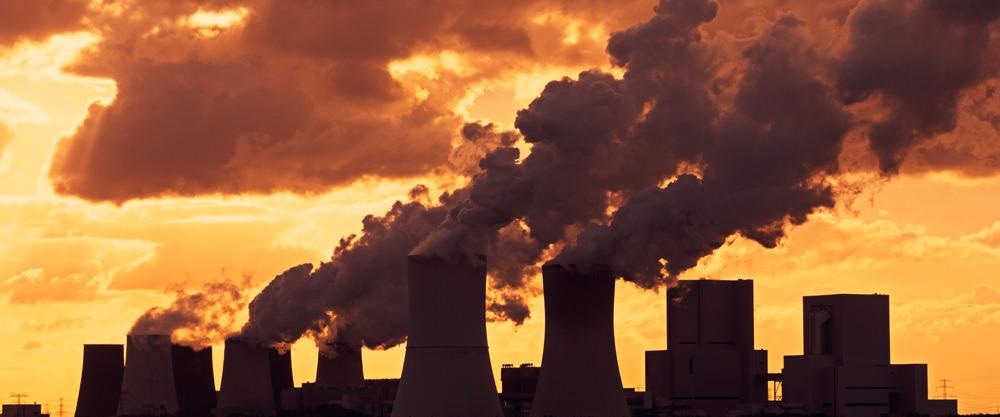A group of researchers from Scotland, UK, reviewed several models such as the Institute of petroleum guidelines to quantify greenhouse gas emissions from decommissioned oil and steel structures and analyzed current policies to achieve net-zero greenhouse gas goals. This research has been published in the journal Energy Policy.

Study: Quantifying greenhouse gas emissions from decommissioned oil and gas steel structures: Can current policy meet NetZero goals? Image Credit: DesignRange
A significantly large amount of steel is used in the oil and gas industry (OGI) to explore, extract, transport, and refine hydrocarbons as well as recycle the same steel when decommissioned. Some common steel structures used in OGI are steel jackets, drilling rigs, topside, and pipelines.
According to the OGUK (2019), decommissioning represents 10% of the overall expenditure of the OGI with around £1.5 billion currently being spent per year on decommissioning activities in the UK alone. At present, the 20-year-old Institute of Petroleum (IOP) ‘Calculating energy use and gaseous emissions’ guidelines are the current best practice for calculating GHG emissions produced during decommissioning operations in the North-East Atlantic Region.
What are the Problems with IOP Guidelines?
First, IOP guidelines haven’t been updated regularly for 20 years. It attempts to take a life cycle assessment (LCA) approach, but it does this in a very confined way that has some major assumptions, thereby missing large volumes of GHG emissions. It shows inconsistencies, biases, and assumptions, such as the following.
The guidelines apply the same values of GHG emissions to steel for both recycling and reuse, whether it is reprocessed after being smelted or reused without any alteration and these two are entirely distinctions in terms of energy requirements and emissions produced.
The guidelines assume that if materials are left in situ they can be effectively taken out of the materials loop and for GHG emissions new manufactured materials can replace the lost materials. However, this is only applicable to materials that can be recycled and GHG emissions associated with non-recyclable materials such as plastics and cement are ignored.
The IOP guidelines also do not take into consideration the location of recycling and waste handling and do not consider GHG emissions produced during the transportation of materials to these recycling points.
It assumes that all primary steel (steel made from new) will be manufactured in a blast furnace (BF) or basic oxygen furnace (BOF) and all recycled (secondary) steel will be processed in an electric arc furnace (EAF). It also assumes that EAF always uses electricity produced by renewable sources, whereas in reality, EAFs are often coal-powered. Both BOF and BF use a significant percentage of secondary steel in primary steel manufacturing.
What is the Current Scenario of Global Steel Recycling and Corresponding GHG Emission?
China is by far the largest producer of steel with 996 million tonnes produced in 2019 and 920 million tonnes in 2018 followed by India at around 10% of this figure. The volume of scrap steel recovered for recycling was 105 million tonnes in 2018, whereas primary steel production was 1808 million tonnes.
The IOP figures for GHG emissions associated with manufacturing and recycling steel is 1889 kg CO2 (eq) per tonne of primary steel produced and 960 kg CO2 (eq) per tonne of secondary steel. According to World Steel Association data (2020), 1.85 tonne CO2 (eq) is released from every tonne of steel produced,
What are Different GHG Emission Stages in Secondary Steel Manufacturing?
According to previous reports, the GHG emissions due to steel manufacturing in an EAF is 734 kg CO2 (eq) per tonne of steel. It depends on the volume of hydrocarbons in the charge, the burner, the efficiency of the processes, as well as the carbon content of the steel scrap, graphite, or other additives used.
More on Emissions: Using Leak Detection to Cut Methane Emissions Whilst Boosting Safety
GHG emissions due to the production of electricity consumed by the EAF are considered by Chesnokov as “indirect emissions”. Indirect GHG emissions from the EAF can be higher than that of direct emissions. The production of electricity used in the EAF is the primary indirect GHG emissions source.
The GHG emissions in the process of generating electricity for use in an EAF are dependent upon the type of fuel used and the thermal and generating efficiency of the power plant. Electricity produced from renewable sources such as solar, wind, or hydropower significantly reduces the overall carbon footprint. On the other hand, fossil fuel used to power electricity generation has a significantly larger carbon footprint that must be calculated.
Coal-powered power plants produce 583 kg CO2 (eq) per tonne of steel and renewables such as wind produces just 3 kg CO2 (eq) per tonne of steel.
GHG emissions due to the transportation of scrap steel to recycling centers is another major factor. GHG emissions from shipping are responsible for 3% of all global GHG emissions at around 1 Gt CO2 (eq)y-1 making shipping the 6th largest contributor to global GHG emissions.
GHG emission figures for maritime transport of up to around 135 g CO2 (eq) km/l are reported by the European Environmental Agency (EEA) (2017). GHG emissions due to shipping should take into consideration the impact of ship size, age of the ship, efficiency of the engine, fuel use, speed, sailing route, number of stops, weather, and seawater currents and winds, the volume of cargo, and number and type of ship maneuvers so that an accurate account of GHG emissions due to shipping is calculated.
Reference
A. Davies, A. Hastings, Quantifying greenhouse gas emissions from decommissioned oil and gas steel structures: Can current policy meet NetZero goals? Energy Policy, 160, 2022, 112717, ISSN 0301-4215. https://www.sciencedirect.com/science/article/pii/S0301421521005826?via%3Dihub
Disclaimer: The views expressed here are those of the author expressed in their private capacity and do not necessarily represent the views of AZoM.com Limited T/A AZoNetwork the owner and operator of this website. This disclaimer forms part of the Terms and conditions of use of this website.